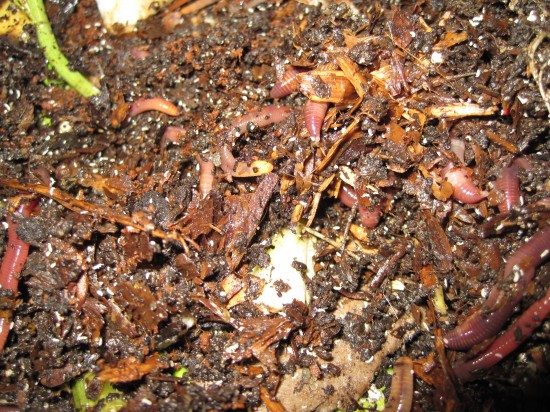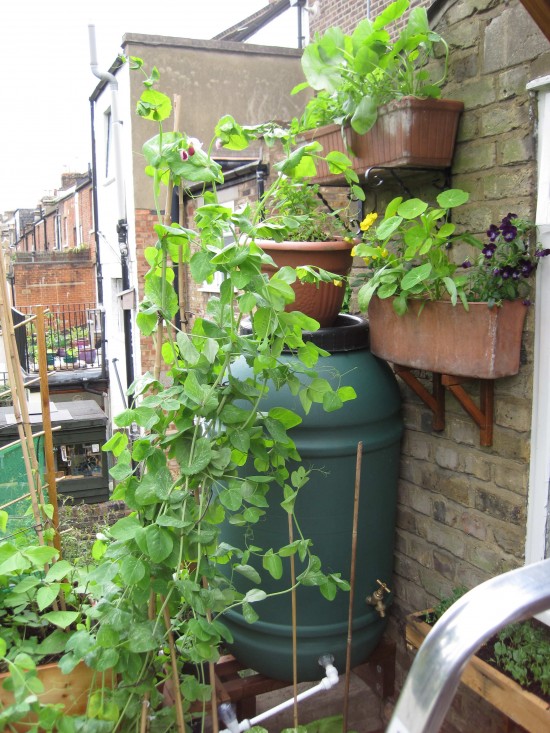Learning how to make nutrient rich worm compost

If you’re growing in containers, you’ll know that one of the biggest challenges is to keep your soil fertile enough to grow vegetables, which are mostly hungry beasts. As the nutrients in most commercial composts are exhausted after six weeks or so, it's vital to regularly add nutrients.
The number of different ways to add nutrients can be bewildering. These range from commercial inorganic fertilisers (best avoided in my view), to commercial organic fertilisers like chicken manure pellets and seaweed extract (useful to fullback on), to home made fertilisers like nettle or comfrey tea (excellent if you have the time and can find some).
For us city bods growing in small spaces, the wormery is a brilliant solution. It takes up little space, doesn’t smell, and transforms your waste food into magnificent compost. This compost is high in nutrients, has excellent water holding capacity, and a good structure. It’s also high in microbial life (bacteria and things) that are incredibly beneficial to plants: they improve resistance to disease and encourage strong root growth. No wonder it is known by some growers as ‘black gold’!
A menu for a nutrient rich, healthy wormery
A healthy wormery needs a mix of nitrogen rich materials (most food waste) and carbon rich material like cardboard, paper and wood chips. Without enough carbon it quickly becomes anaerobic, smelly, and the worms die.What else can you add to your wormery to make a superbly rich and balanced compost? As well as your waste food (go easy on the onions and citrus and don’t add any meat or fish) here are a few ideas to try:-
- Manure. This is the magic ingredient. Well rotted manure will encourage your worms to thrive and breed. It contains masses of microbes that the worms love. But do not use fresh raw manure (too rich) or bagged manure from garden centres (sterilised so contains none of the beneficial microbes). George Pilkington (see below) recommends adding a layer every six weeks or so.
- Nettles. Rich in nutrients and also enjoyed by worms. Chop them up and add a handful every now and then.
- Soil. Add the odd handful of soil to introduce beneficial bacteria to the worm bin. Soil also contains grit that the worms will use to help digest food.
- Banana skins. Rich in calcium, sodium, silica, sulphur, magnesium and phosphates. Apparently! (Source Companion Planting by Brenda Little).
- Comfrey. Provides a wonderful source of nutrients, particularly rich in potash. Grows wild in many parts of the UK (including London). Pick a few leaves from each plant, chop, and add a few handfuls.
- Seaweed extract – watering your worm bin with seaweed extract once a month or so will probably encourage beneficial microbial activity.
- Wood shavings or chips – good for retaining moisture and aeration, as well as providing a source of carbon. However, it’s best to avoid pine and other coniferous woods. These contain chemicals (eg terpene) that are not good for the worms.
For more information, see George Pilkington’s excellent book Composting with Worms.
How to use worm compost
I’m also experimenting with when and how to use worm compost to the maximum effect. It’s a powerful and versatile fertiliser. Much stronger than normal compost so you need to use it carefully. One mistake I’ve made this year is to add vermicompost to my peas (see photo below). I’m fairly sure this is why they are showing fantastic leaf growth (over 6 foot tall!) but have been slow to flower and fruit. Mange tout - 6 foot of leaf growth before flowering. Effect of worm compost?
Mange tout - 6 foot of leaf growth before flowering. Effect of worm compost?
4 comments
Leave a comment